Football’s near-miraculous recovery at Grinnell
Six years after Iowa’s best college gave up the sport, it’s been courageously revived. Four years into it, the Pioneers are not yet winning a lot, but they’re competitive – and inspiring.
GRINNELL, Iowa – My “Iowa small-college football season” continued here Saturday, Oct. 19, and, if you know the sport’s history in Iowa, you might remember this is where it all began.
If you don’t know that, you can read it on a monument just beyond the north end zone of Rosenbloom Field, where the plaque memorializes “the first football game west of the Mississippi, on this campus, Nov. 16, 1889.” Surprisingly, it doesn’t mention the final score, but historic posters hanging around the campus do: Grinnell 24, Iowa 0.
In the 135 years of football since then, the Pioneers had some seasons of glory – 1915-’17, the early 1960s, the late 1990s – and some seasons of woe. But the sport hit bottom in 2019, when a depleted squad of 40 men had a dozen injuries in their first three games. They called a team meeting with their coaches and college administrators, and the players made the painful proposal – giving up the sport, at least for then.
Then came the “COVID season” of 2020 when the college operated remotely and there were none of the usual on-campus activities.
Goal-to-go for the Grinnell College Pioneers (in red) against the Lake Forest college Foresters.
In that time, Anne Harris, who was the Grinnell dean and is now its president, started hearing from faculty, athletics staff and students, too, that football should be given new life here. She had some doubts at first.
“My misgivings were about sustainability – did we have all that it takes to turn a team around and to keep that momentum going?” Harris told me this week. “Grinnell College is the least complacent place I’ve ever been. There’s always more that we can do in new ways, but I can say that the changes that have been implemented and championed have produced results that we can be proud of, all the while seeking more.”
In the fall of ’21, Grinnell Pioneers football started anew with a new coach, Brent Barnes, a 20-year coaching veteran who seems a great match for Grinnell traditions. (He was a triple major in his undergraduate years at Rice University in economics, history and mechanical engineering.)
So, how does his big boss, the president, think the program is doing now at the college of 1,750 students?
“From my perspective as an enthusiastic and invested spectator,” she said, “I see more of a team – a valor and collaboration among players and coaches that has resulted in some truly great moments and games.”
She even liked what she saw Saturday in a 42-22 loss to Midwest Conference-leading & undefeated Lake Forest College Foresters from north of Chicago. The Pioneers played the bigger, stronger Lake Forest team to a 7-7 tie well into the second quarter and came back in the final seven minutes of the game to score two more touchdowns.
A hand-off and plunge for the sons of old Grinnell.
There’ve been only seven wins since the revival, and this fall’s team is 1-5. But both the president and the head coach are correct – the number of players is growing (60 are on the squad now), players are pushing themselves in the off-season for more physical development, and they’re very competitive. It looks to me that several of their final four games this season are winnable, and those possibilities start this next Saturday, Oct. 26, against the Knox College Prairie Fire in Galesburg, Illinois.
Given all that, I said to the president, what does she now see as the value, even importance, of having a football program at an esteemed academic institution like Grinnell?
“I love this question!” President Harris responded. “Whenever I go to a football game, I look out on a field of players who are giving the game their all and who I know are also stellar students in physics, economics, history, statistics, environmental policy – you name it! The excellence of our student athletes on and off the field is deeply inspiring.
“I also love that we have decals of the football players’ home states on the backs of their helmets,” she continued, “and it thrills me every time to realize that our players come from all over the country to be here and share their talents. I’d also list the joyous community that gathers to cheer the players on and champion them. Our student government association is organizing a big turn-out for our last home game on November 2 – I hope that you can join us!”
Grinnell will never let the University of Iowa forget this one (check the football).
One of my favorite Grinnell football alums is Scott Raecker, of Urbandale. After playing at Grinnell from 1980-84, Raecker became executive director of the Iowa Sesquicentennial celebration in 1995, then a longtime member of the Iowa House of Representatives and now executive director of The Robert D. and Billie Ray Center, based at Drake and teaching “Character Counts” across Iowa and America.
Raecker played flag football in seventh grade in Waterloo, but broke his foot going into what would have been his eighth grade season, which he missed. When he went into Waterloo West High School, he decided to skip football altogether because he got so interested in music and marching band.
“But I still loved the game of football,” he said, “so when I enrolled at Grinnell, I found out where the head football coach Ed Dombrowski lived, just across from campus, and I walked over there one afternoon, knocked on his door, introduced myself and asked if I could join the football team.”
Even though Raecker had not played high school football, Dombrowski welcomed him to the Grinnell squad – as a 145-pound defensive back. He indeed some playing time, especially in junior-varsity games, and loved the experience.
“The football team was not winning a lot then,” he said, “but all the things about football that are most important in developing a person were there. We learned a lot.”
One of Grinnell’s rivals in the Midwest Conference was Cornell College, in Mount Vernon in eastern Iowa. Cornell’s Ron Corbett was one of the best running backs in America in that era. Corbett later served as mayor of Cedar Rapids and also Speaker of the Iowa House of Representatives, when Raecker was a member. Both were Republicans.
“We’re not supposed to tell stories that happen in our House Republican caucus meetings,” Raecker said. “But one’s so good and happened so long ago, I’ve got to tell it. Corbett was running a meeting, we were arguing over some bill, and he finally yelled at me, ‘Raecker, I ran all over you when you were at Grinnell and I was at Cornell, and I’m going to run all over you in this caucus meeting, too!’ ”
Raecker remains extraordinarily proud of having been a football player at Grinnell.
“I’m sort of a legend in my own mind,” he says. “There were times over the years when we were around other people, I’d pay a quarter to each of our kids to bring up in conversation that their dad played college football – because no one believes that I did!”
One of today’s players I want to tell you about is 6 ft. 4 in. 330-pound offensive lineman Tyrell Taylor, of Des Moines, a graduate of Roosevelt High School. He impressed the bejeepers out of me how hard he played the whole game long in last Saturday’s very warm weather.
Tyrell Taylor (Grinnell College photo)
He’s a senior, a 4-year player, very bright – he’s a computer science major – whom I chased down because I guessed he might have an interesting perspective on the Grinnell College football experience.
His relationship with the sport, he told me, is complicated.
“First of all, in high school, I didn’t really want to play football,” he said. “I’ve always been a more science-oriented kid. My dad has his own electrical contracting company, and when I was little, I had these little electrical kids with all kinds of wires, light bulbs and all that. I loved playing with those. But as I was growing up, I was pretty big – and it was like, well, it was like I just had to play football.”
If he played with half a heart in high school, he was nevertheless good enough to attract the attention of one college football coach, Jeff Pedersen, of Grinnell.
“Coach Pedersen showed up at our Homecoming game in my senior year and asked my Roosevelt coach if he could talk to me,” Taylor said. “He asked me if I’d be interested in playing at Grinnell. Actually, I already had Grinnell on my list of possible colleges because of its academics. It was almost like this was supposed to happen.”
Grinnell, like all NCAA Division III schools, does not give athletic scholarships. But Grinnell is by far the most well-endowed college or university in Iowa, and it’s generous with its academic and financial-need scholarships.
What has football at Grinnell been like for Tyrell Taylor?
“I do really enjoy the game now,” he said. “In fact, I’d say I love football now, and I have a true passion for the game. There are so many mental aspects to it, so many pieces that have to be put together to be successful. Even though it’d be nice to look up at the scoreboard and see our team winning more, still, I come into every game with the idea that my challenge is how well will I do my own job in it? I watch the films afterward, and if I think I’ve done everything I could do to win, that’s enough for me.”
Tyrell Taylor (77) and others on Grinnell’s front wall.
He said he sometimes watches major college football games and, of course, thinks “those guys have it good with those full stadiums, national television, all those resources. Then I think about it and realize, only a small percentage of high school players get to that top level of the college game, and an even smaller percentage go on to the next level of pro football.
“So, I’d argue that it might be more advantageous going to Grinnell – especially for me. The academics here mean a lot more. And with all the resources and networking that I’ll have available as a Grinnell College graduate, well, I think I made the right decision.”
I think Grinnell College made the right decision, too, when it brought back football.
Now, two tips from me that are probably worth two or three touchdowns and much bigger crowds at every game, especially those played at Rosenbloom Field:
--As smart as Coach Barnes, his assistants and all the Pioneers players are, they should challenge themselves that in each game, they will feature a new “Grinnell Special” play. It should be a formation and execution that only Grinnell minds could conceive. The more exotic the better. The public address announcer could even tell the fans and opponents when it is coming, because half the defense would probably be tempted to stand and watch. Who cares whether it will succeed or fail, but I swear, eventually it will work – and it will always be fun!
--Grinnell has the greatest college anthem in the state, maybe in the nation: “Sons of Old Grinnell,” with the words and music written in 1910 by student James Norman Hall. Ever heard of him? He became a World War I flying ace and the co-author of “Mutiny on the Bounty,” plus he wrote a lot of other classic stories and provocative essays for major publishers. (In later years, when Grinnell started sports programs for women, too, another version of the song was written, “Daughters of Old Grinnell,” and it’s terrific, too.) The song is joyous, it is jaunty, it’s so classically collegiate. If the football team would learn the song and, backed by a band, sing it to opponents before the start of every game, and maybe after, it would become a tradition as revered as the Ohio State band “dotting the ‘I’.” And, guaranteed – at least two touchdowns per game!
You can experience more of a football Saturday in Grinnell in the following photos and captions.
Beautiful Rosenblatt Field, with the traditional grandstand on the west side of the field and the seats added with the fantastic “Charles Benson Bear '39 Recreation and Athletic Center” on the east side.
The monument just beyond the north end zone saluting the 1889 “first football game west of the Mississippi,” played at Grinnell against the University of Iowa — and Grinnell won!
Meanwhile, up on campus, students are reminded what they’re supposed to be doing at Grinnell.
If you drop by the newsroom of the Scarlet & Black student newspaper, you can see this note taped to the front window. The 2015 message of encouragement was from “a former S&B editor myself,” Kay Bucksbaum, a notable member of the Grinnell College board of trustees.
In back of the grandstand at Rosenbloom Field, I found this memorial to a great friend and mentor of mine, Glenn Leggett, the president of Grinnell in the turbulent 1960s and early ’70s. In an essay he wrote about those times, he called student journalists “those hippity-hoppity sages and savants.” Those were my own years in college newspapering, and I told him, “I resemble that remark.”
Downtown Grinnell looks just great, with a series of new photographic murals on the exterior walls of stores and buildings by artist Isaac Campbell. This one is of the 1932 Grinnell High School football team.
Another new mural shows an extraordinary 1945 photo of the town of Grinnell’s own Renfrow sisters, part of a highly successful family that settled in the community after grandparents were enslaved elsewhere pre-Civil War. Edith Renfrow Smith (second from left) became the first Black woman to graduate from Grinnell College in 1937. She had a career in teaching and community service in Chicago, where she still lives at 110 years old.
In late September, Grinnell College honored Edith Renfrow Smith by naming its fantastic new student housing development “Renfrow Hall.” It is now being completed on an ideal spot that is on the north edge of the Grinnell business district and the southwest corner of the campus.
“Thy glory and thy honor/ Thy fame alone we tell/ And ever for thee/ Our love shall be/
Grinnell — Grinnell — Grinnell.”
--
You can comment on this column below or write the columnist directly by email at chuck@offenburger.com.
--
A NOTE TO MY READERS: I write this column, “Iowa Boy Chuck Offenburger,” as a member of the Iowa Writers’ Collaborative. You can subscribe for free. However, if you enjoy my work, please consider showing your support by becoming a paid subscriber at whatever level feels right for you. The Iowa Writers Collaborative is made up of some of the foremost regional journalists in the country. Each writer is independent and has a Substack of their own.
Linking readers and professional writers who care about Iowa.



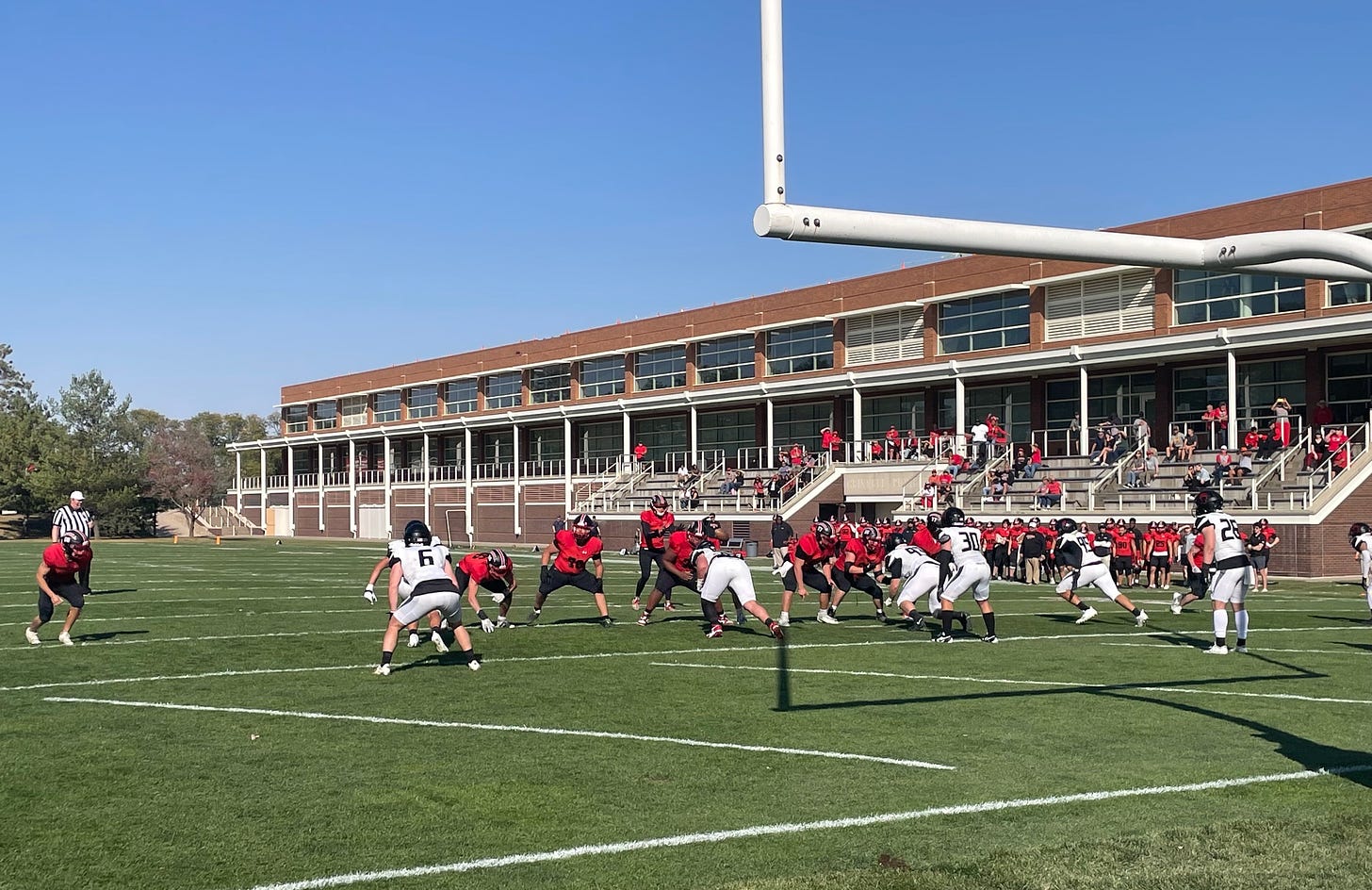
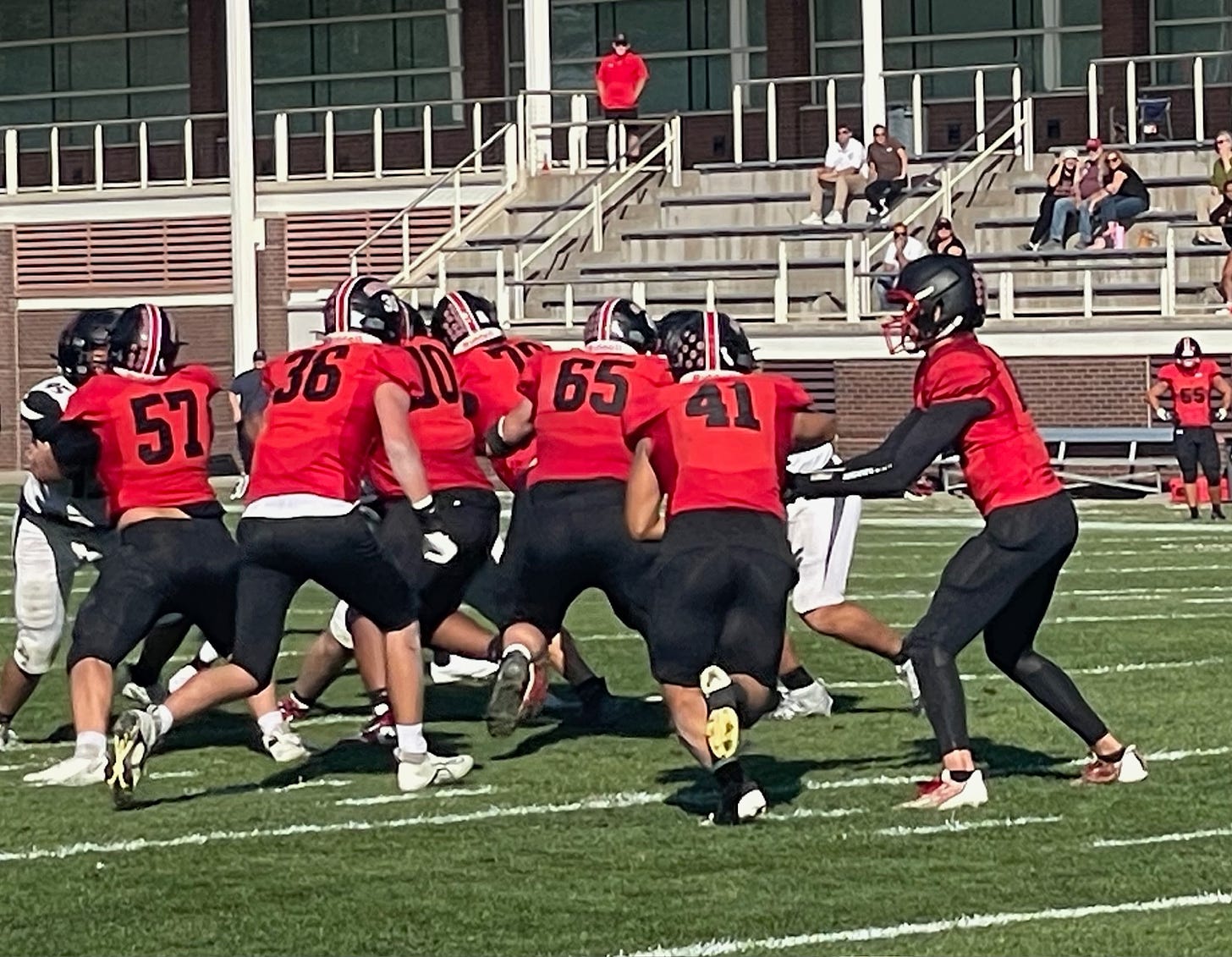
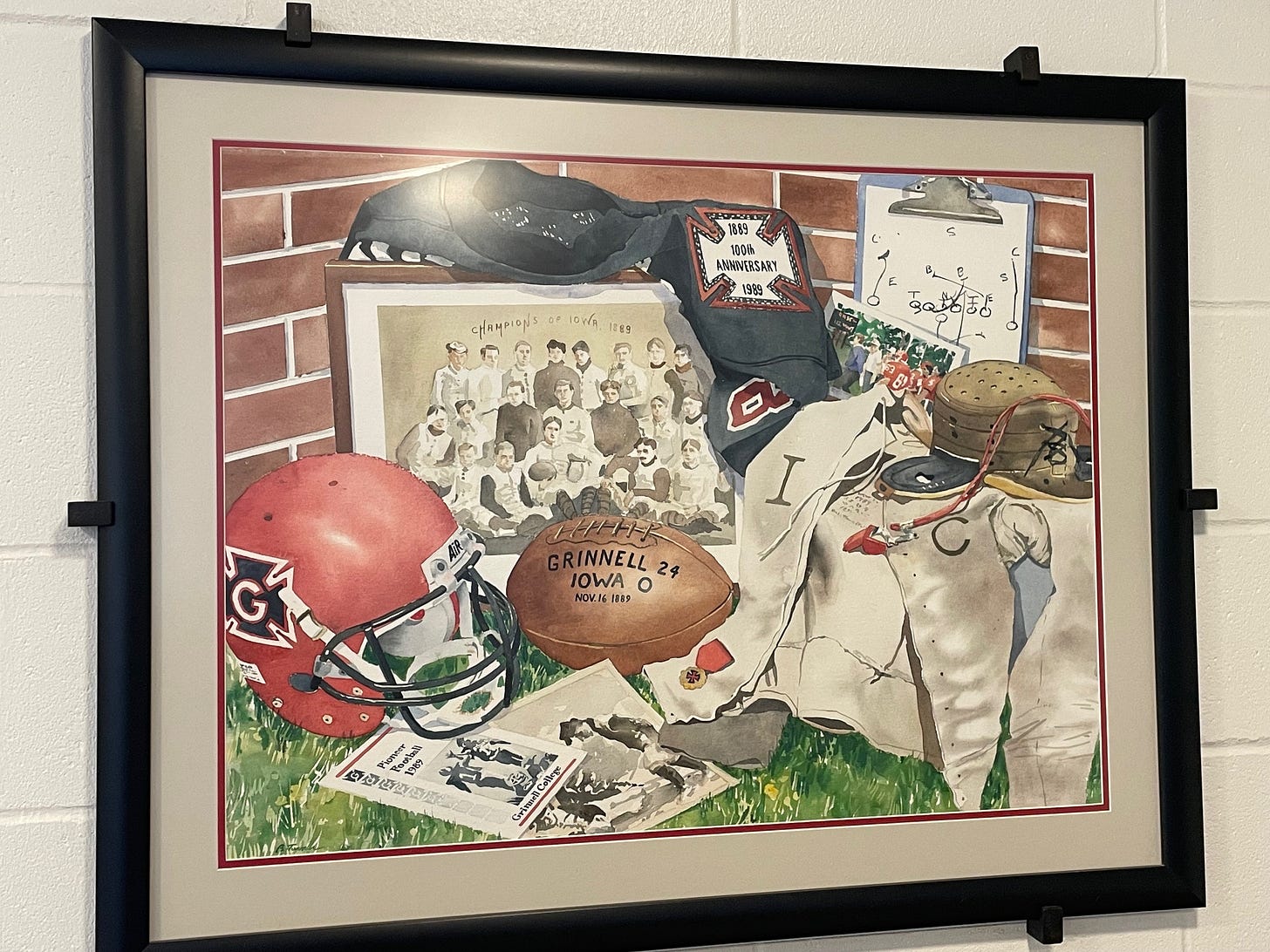
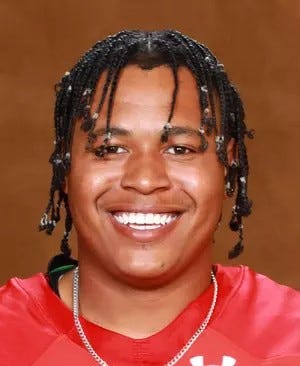
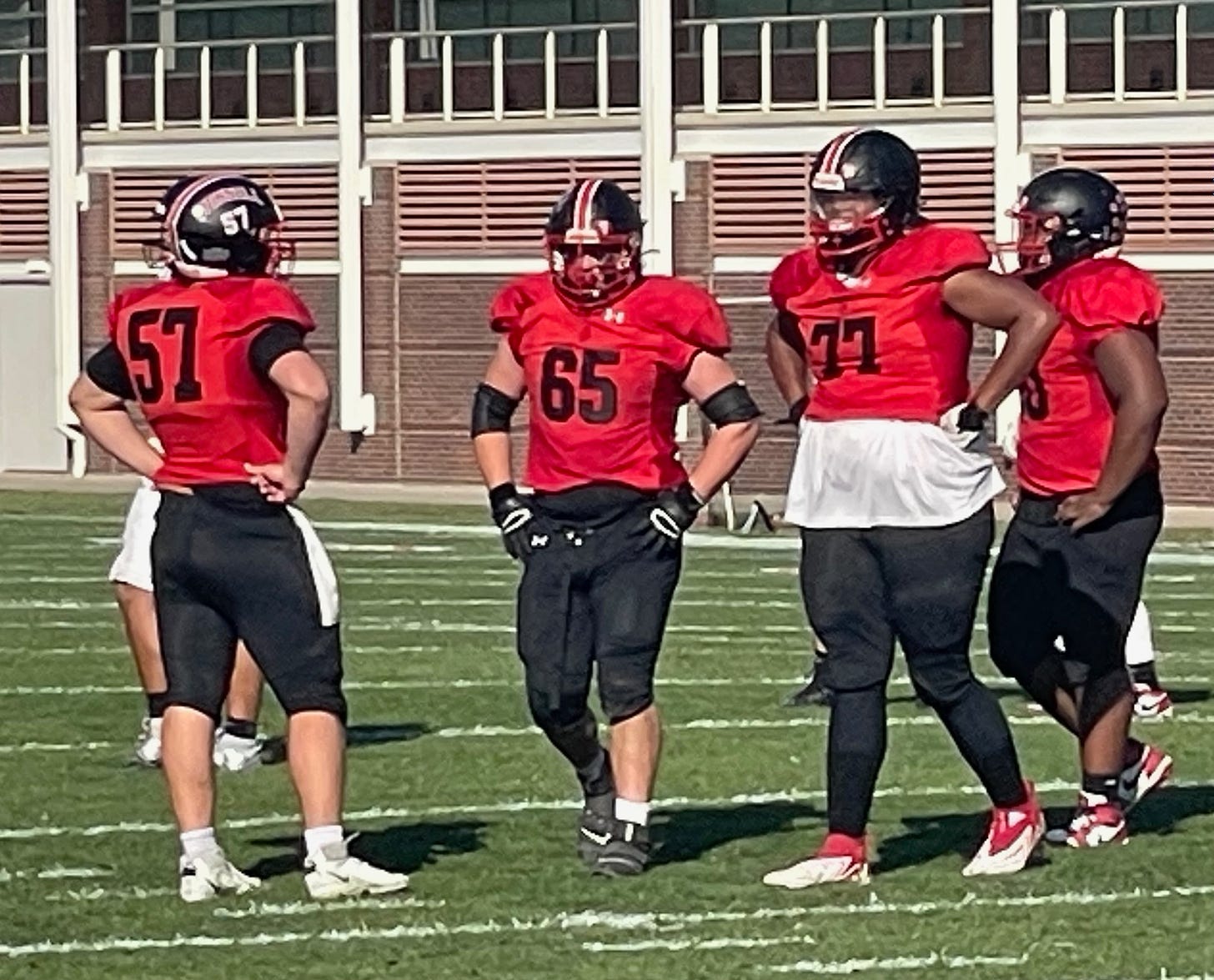
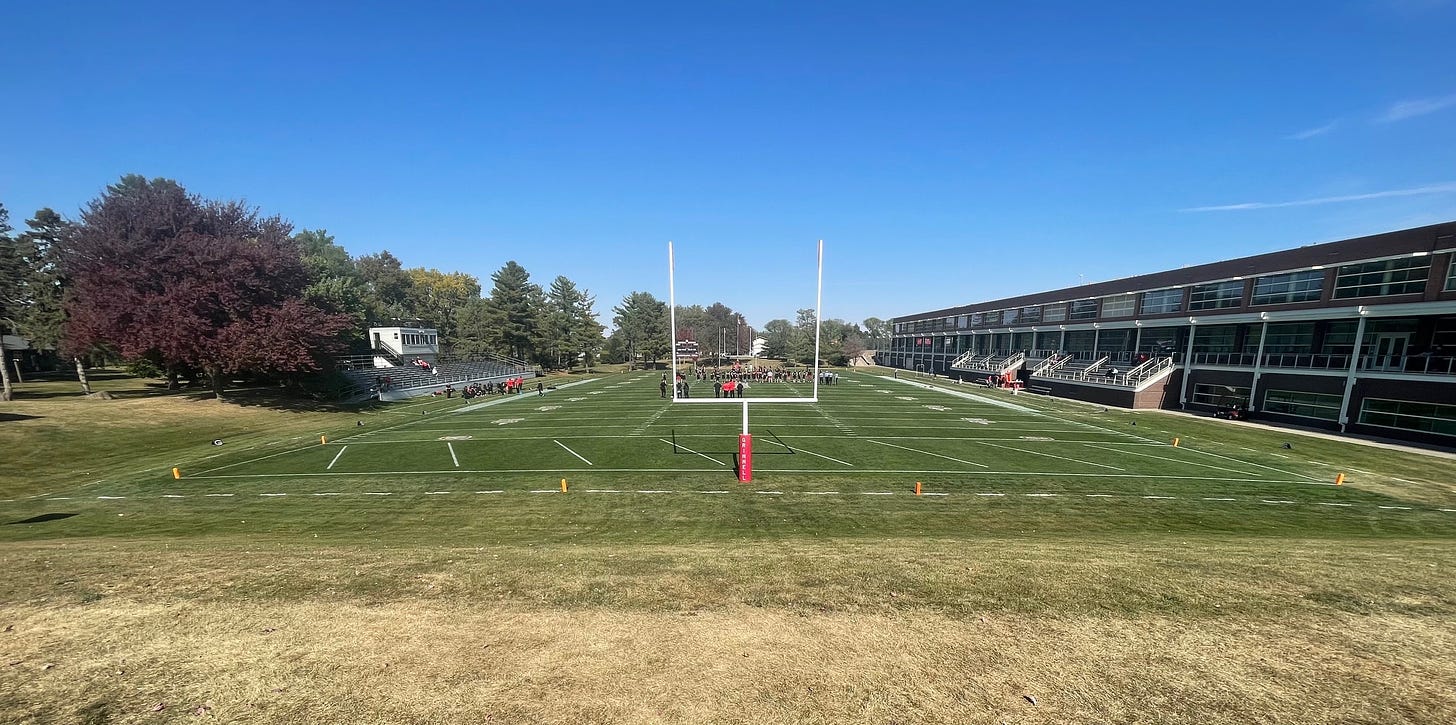
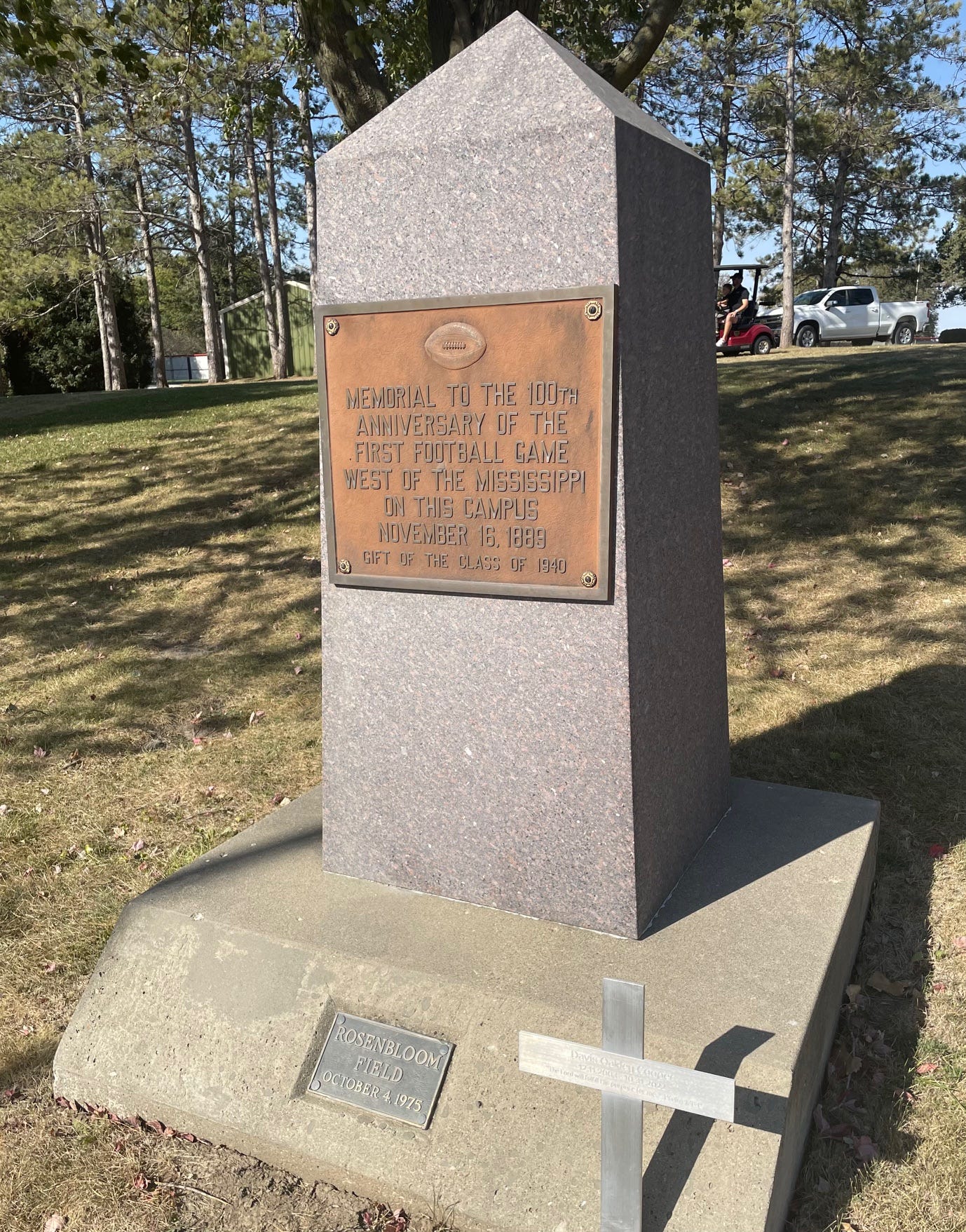
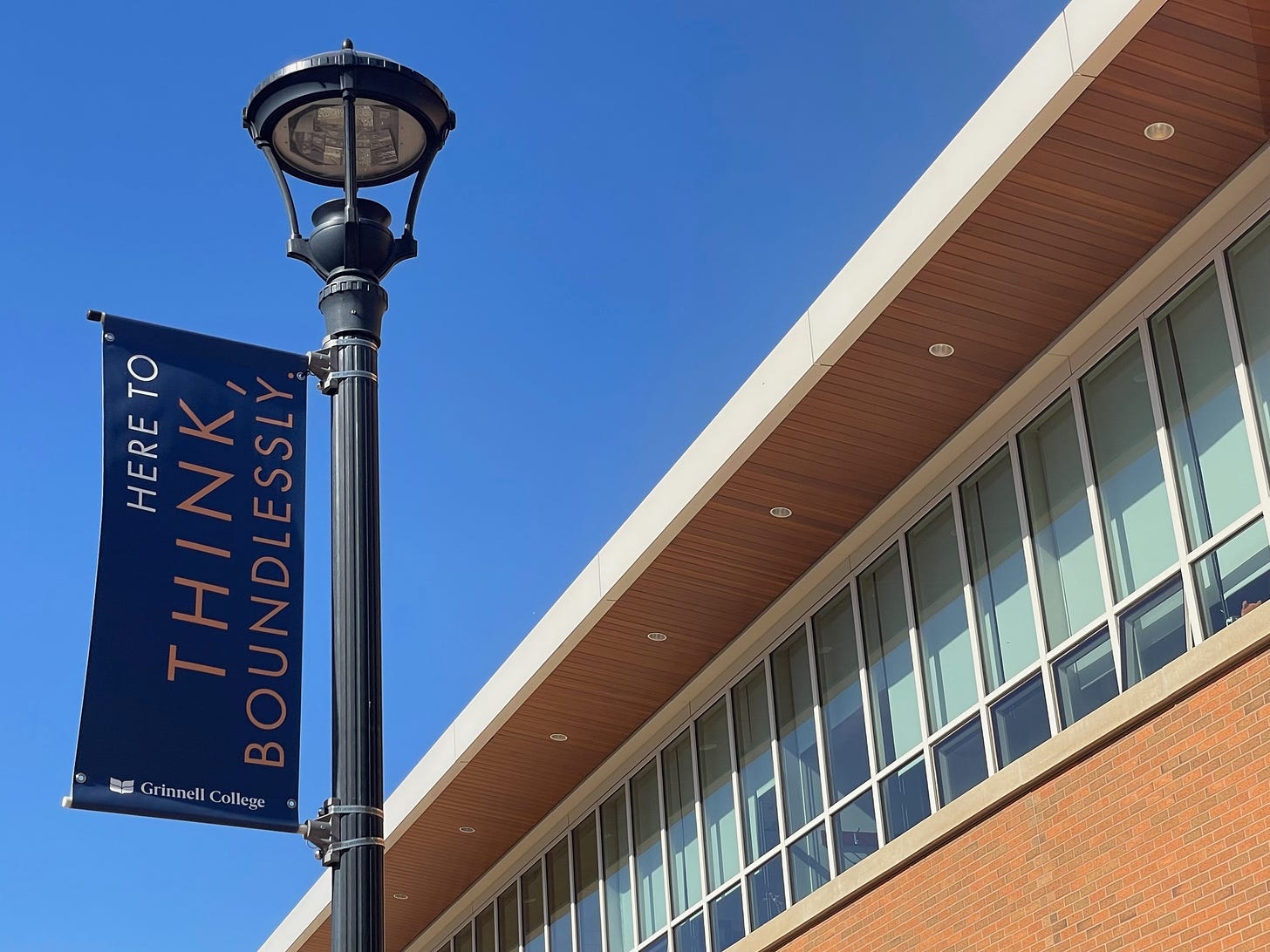
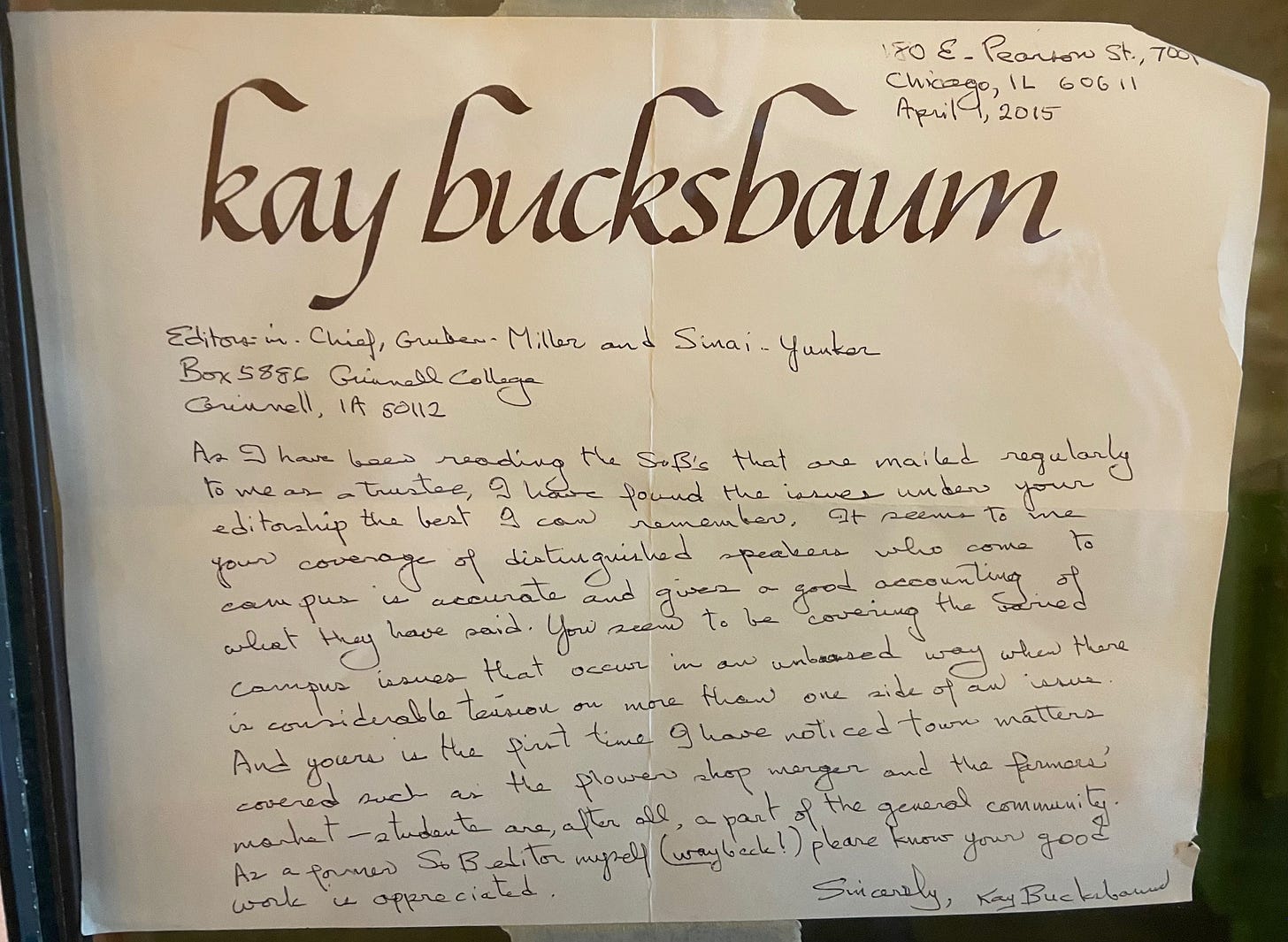
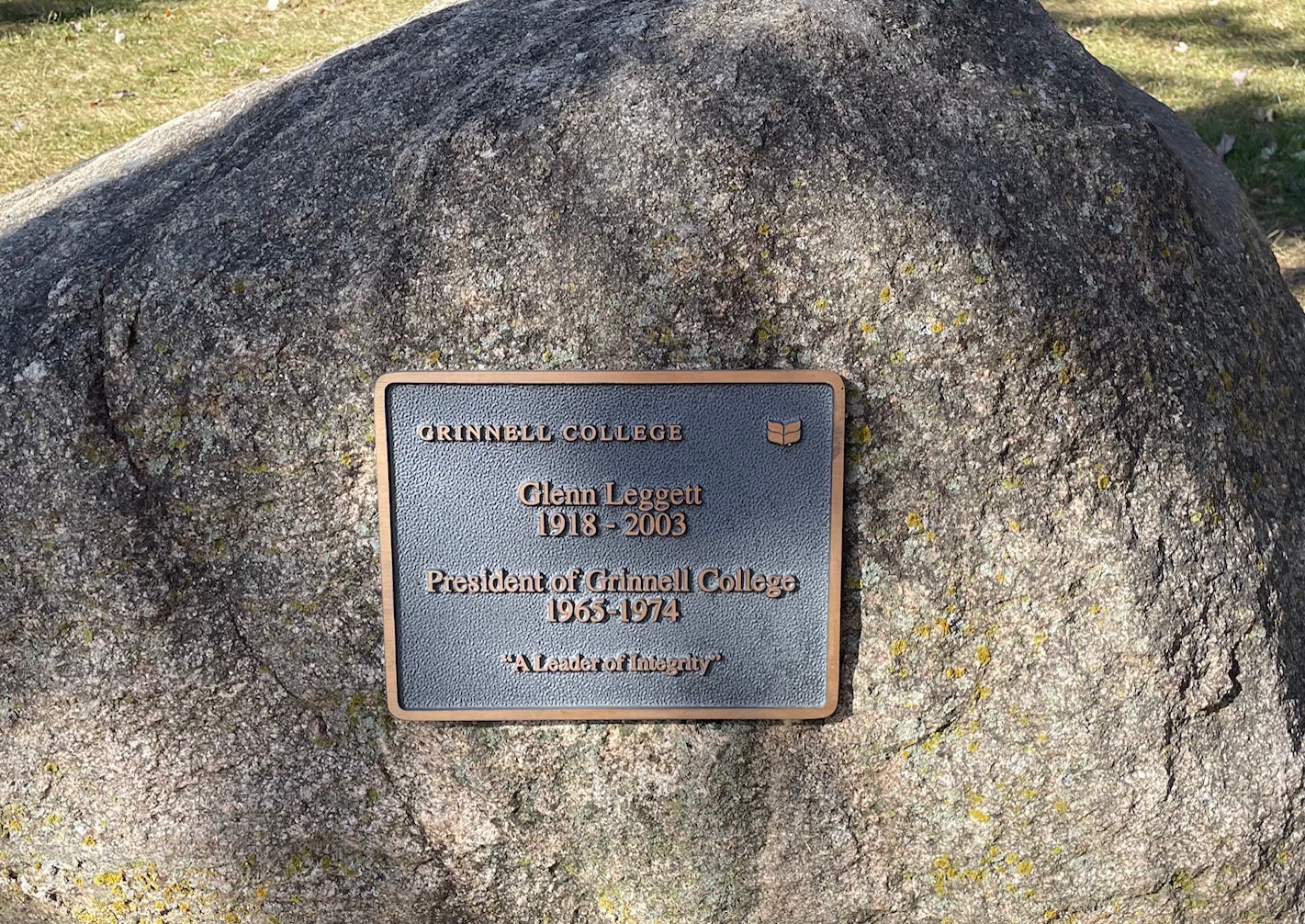
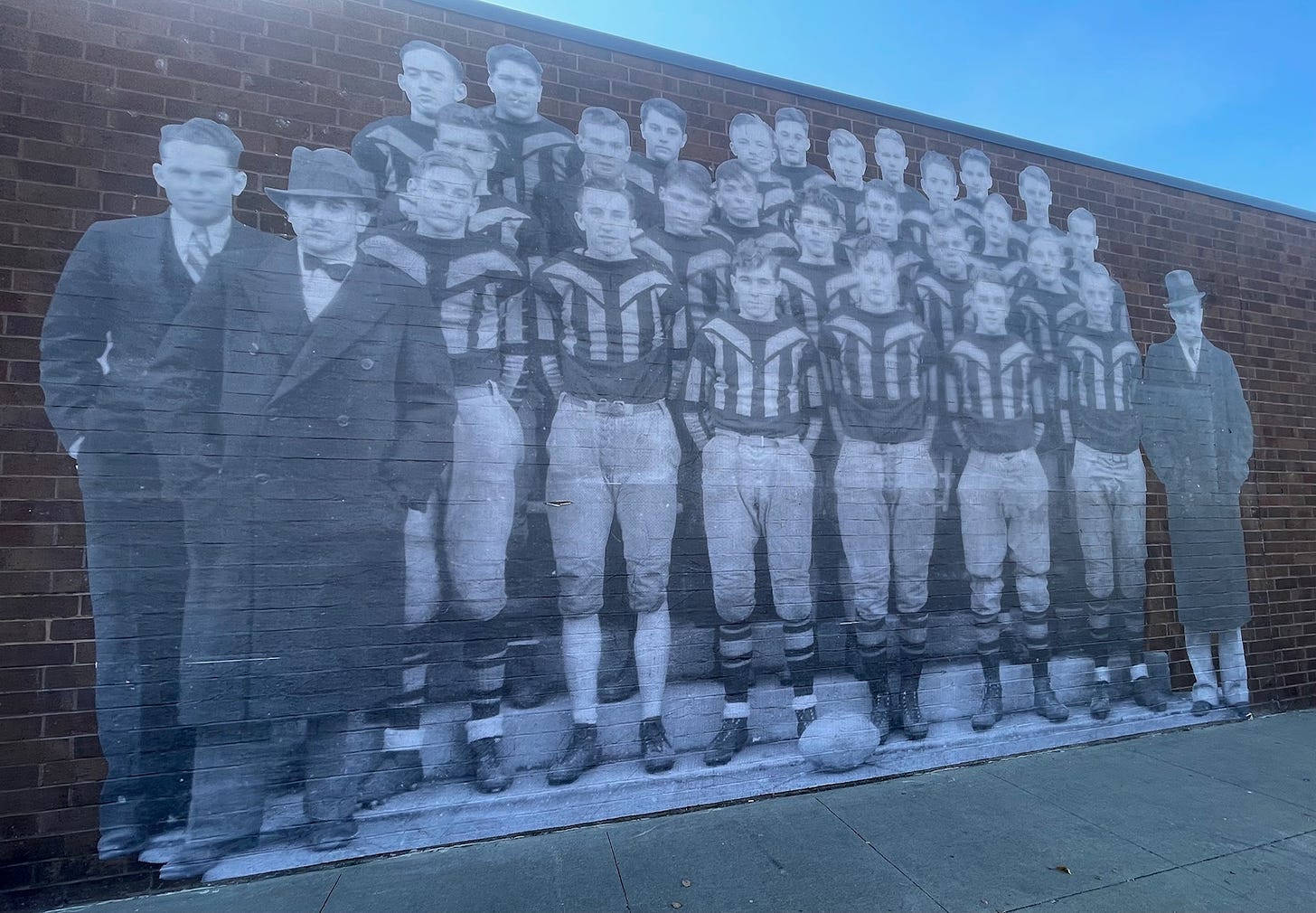
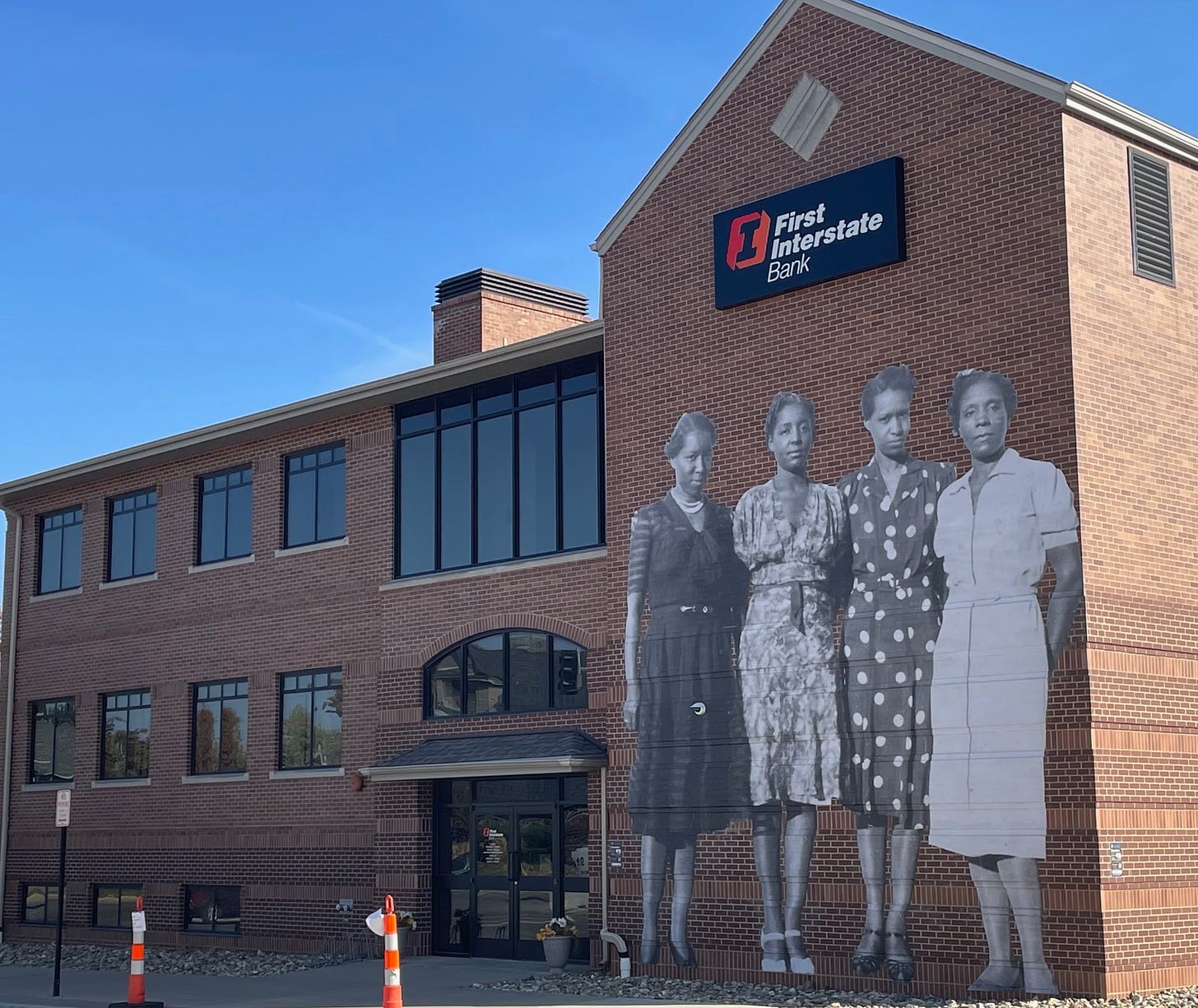

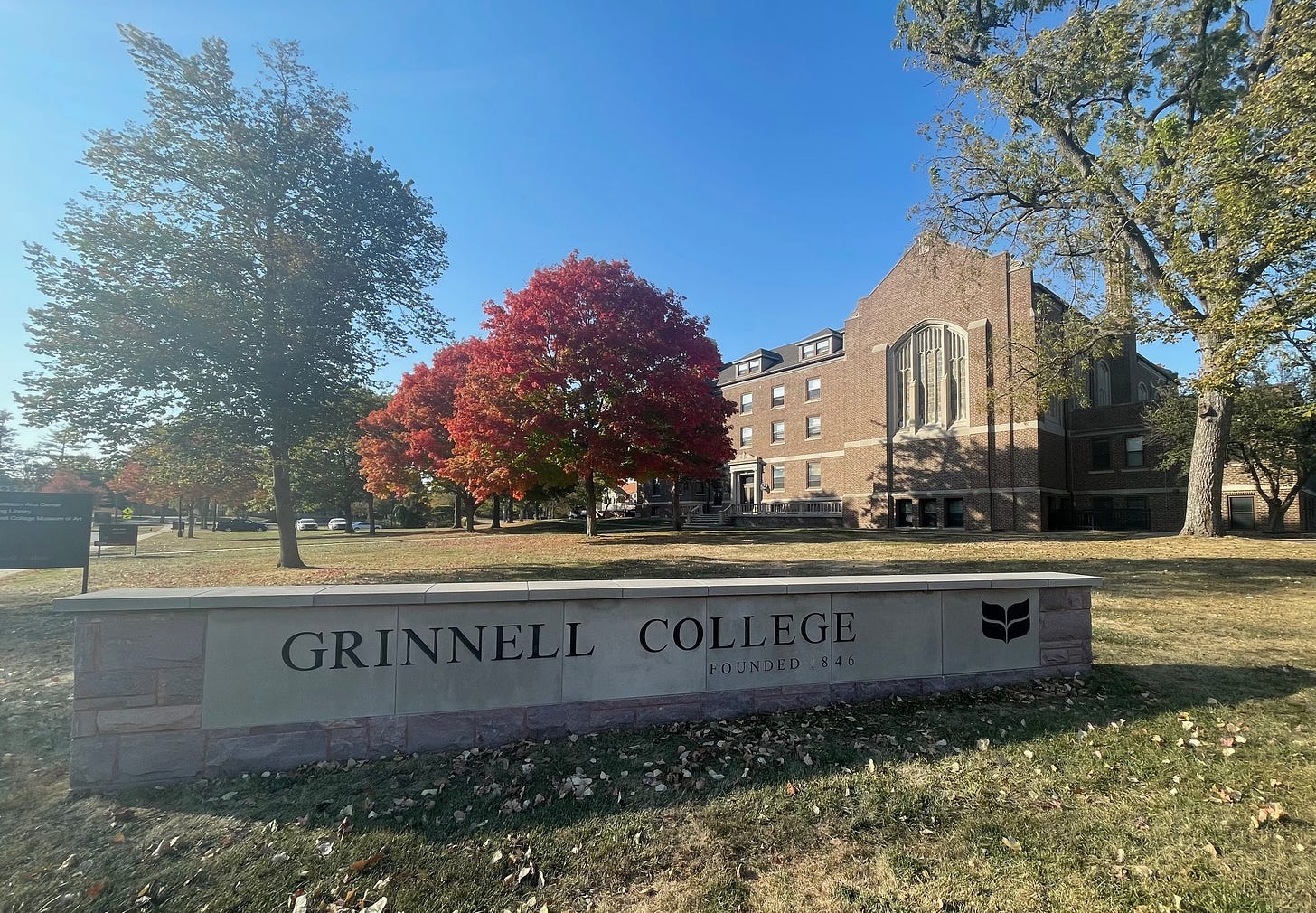
Chuck, I was there in the early 60s when the teams began to win games. The many letters from alums suddenly started to show concern that academics must be taking a hit if football was so ascendant. But there's another story to write about our great track squads of that era under Coach Dick "Killer" Young (originally from Jefferson). It was a privilege for me to be a middling quarter and half-miler on that team.
Chuck - what a great overview of the football program, the college and the town! Thanks from afar!!